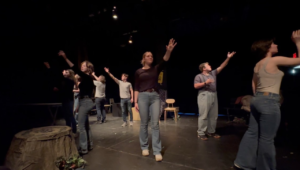Historic Vatican Summit Takes Place in Rome
By Theresa Whitfield
For the first time in the history of the Catholic Church, the pope held a summit in Rome to discuss the topic of the longstanding history of abuse and the protection of minors in the church. Out of the 190 bishops and leaders present, a small handful were from the United States. First announced on September 12, 2018, it took place between February 21-24.
Pope Francis called for this summit in the midst of the aftermath of allegations of sexual abuse against Theodore McCarrick, former cardinal and Archbishop of the District of Columbia. In June 2018, these allegations stated that McCarrick sexually abused and had sexual contact with young seminarians while bishop of New Jersey almost 50 years ago. In addition to this, in August 2018, a Pennsylvania grand jury report released documents of more than 70 years of abuse from 300 clergy and church members involving more than 1,000 minors.
This summit was held because of the revelations of abuse that have made their way to the highest parts of the Church across the globe and the detrimental harm these revelations have done to the credibility of the Church. It seeks to regain the Church’s trust of the public as well as bring healing to the victims.
“The holy people of God are watching us and wait not just for simple and expected conviction, but concrete and efficient measures,”said Pope Francis at the summit.
The summit took place over three days with a different overarching theme each day. The themes were Responsibility, Accountability, and Transparency. The first day, Francis delivered 21 reflection points to the participants, which Archbishop Charles Scicluna of Malta, described as a “road map” for discussion in following days, reported the Washington Post. This day centered itself on taking responsibility for processing of sexual abuse cases, as well as the responsibility the bishops have to deal with conflicts and tensions when they are presented with them.
Ideas for specific protocols about how to handle reported abuse were presented. Pope Francis mentioned the idea of having a clear contact for victims who want to report abuse at the local level of the Church.
On the second day, the topic of the day shifted to accountability. This covered the topic of the Church being held accountable for the massive amounts of cover-up over the years and the impact this has had on the victims. American Cardinal Blase Cupich gave a presentation, where he acknowledged that lay people have much more insight into “the trauma the abuse has caused,” and because of this, these lay experts need to help clergy conduct investigations of sexual abuse and be there every step of the way.
The third day’s conversation focused on transparency. When it comes to sexual abuse cases, there is no alternative to transparency, as Munich’s Archbishop Reinhart Marx said in his presentation. This transparency is one of the first steps the Church will take to regain their credibility with the world. A major part of this new culture of transparency the church seeks to embrace is acknowledging their failings to the world for the victims.
“I think that we do have to acknowledge what we have done and what we have failed to do,” said Cupich. “I would, however, be careful about saying that we are going to ask victim survivors for forgiveness. We really don’t merit that. That has to come on their own.”
While the ideas from the summit and the reflections are steps in the right direction, many people question why it has taken the church so long to directly address this issue. It first exploded in the eyes of the public in 2002 when the Boston Globe published its expose, but both Pope Benedict and Pope Francis have averted from addressing the public on this issue until it could not be pushed aside anymore. Many also see this summit as mainly educational as Pope Francis did not go so far as to propose changes to church law regarding handling clergy who have been accused of sexual abuse. The reality of the situation shows that here is no standard fix to this issue that can be put in place.
The Washington Post reported that “corrupt legal systems or draconian laws in some countries make it unrealistic for the vatican to mandate that all bishops report abuse accusations to criminal authorities,” church officials have said. This is a standard that is common within the U.S. church.
“It’s unclear what progress might be made at that meeting,” said Garvey in an official statement to the University. “And even if progress is made, it won’t immediately heal the breach of trust that has arisen between Church leadership and the faithful since last summer. That said, there is plenty we can and should do here at The Catholic University of America to be part of the solution.”
In response to this crisis in the church, Catholic University held a series of conferences called Healing the Breach of Trust. This series was opened to the public and included panels of journalists, Cardinal DiNardo, experts from various universities around the country, as well as President garvey himself. DiNardo is the president of the United States Conference of Catholic Bishops and was also a participant at Vatican summit. The next installment of this series will take place on March 26.





